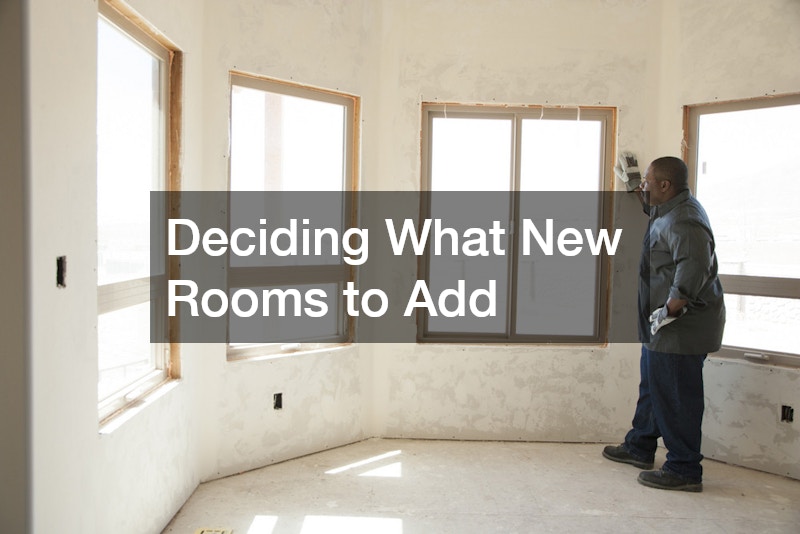Building Expectations
Rebuilding a house is a significant endeavor that demands thoughtful planning, detailed research, and thorough execution. Whether you’re leveling your current home to start anew or embarking on a major renovation, a full-home rebuild is a rare opportunity to craft a space that reflects your personal style, supports your lifestyle, and incorporates modern amenities. However, the process can be overwhelming if approached without the right considerations. From budget planning to legal compliance and from sustainability to technology integration, every step needs calculated decisions.
Unlike smaller remodeling projects, a home rebuild touches every aspect of homeownership—structural integrity, design cohesion, safety, comfort, and long-term efficiency. It’s a chance to fix long-standing issues, add long-desired features, and future-proof your living environment. Whether you’re motivated by damage, disrepair, or simply the desire for a fresh start, understanding the critical factors involved in the process is key to a successful outcome. We’ll explore 10 vital things to consider for your house rebuild to help you make informed choices and avoid costly pitfalls.
1. Overall Budget for Your House Rebuild
Before breaking ground, it’s imperative to determine your overall budget. A comprehensive financial plan sets the foundation for the entire rebuilding process. Begin by assessing how much you can afford and secure funding through savings, loans, or home equity. Include all potential costs—demolition, architectural design, permits, materials, labor, interior finishes, and landscaping.
Home remodeling during a house rebuild often leads to scope creep, where costs escalate due to upgrades or unexpected issues. Add a contingency buffer of 10–20% to handle surprises. Budgeting isn’t just about construction—think ahead to moving expenses, utility connection fees, temporary accommodation, and furnishings. Prioritizing your spending helps you make smart choices without compromising on essential features.
Break your budget into phases: demolition and prep, structural framing, roofing and exterior, interior systems, and finishes. Also, weigh the long-term value of upgrades. Investing in high-efficiency windows or durable roofing might increase upfront costs but save money over time through energy savings and reduced maintenance.
2. Choosing the Right Contractor

Hiring the right contractor can make or break your rebuild project. The contractor is the linchpin who ensures your kitchen countertops are perfectly aligned, your foundation is solid, and your vision becomes reality. Start by seeking recommendations, reading reviews, and checking licenses and insurance.
A good contractor will offer transparency, clear communication, realistic timelines, and detailed contracts. During interviews, ask about experience with house rebuilds, project portfolios, subcontractor management, and dispute resolution processes. Also, establish how frequently you’ll get progress updates and walk-throughs.
Don’t be swayed by the lowest bid. Quality workmanship and clear accountability are worth paying more for. Check references and visit past projects if possible. Building a strong working relationship with your contractor will help avoid miscommunications, particularly when coordinating complex tasks such as plumbing rerouting or custom cabinetry.
Make sure the contractor is well-versed in managing specialty installations and modern home features. If you’re incorporating custom kitchen countertops, integrated smart systems, or green energy solutions, your contractor should have proven experience in these areas or trusted subcontractors who do. Ask for a detailed timeline with milestones and clarify how changes will be handled. A proactive, organized contractor not only delivers results but minimizes delays and frustrations throughout your rebuild.
3. Legal Requirements for a House Rebuild
Navigating the legal landscape of a house rebuild is essential to avoid project delays, fines, or even forced demolition. Every locality has specific zoning laws, building codes, and permit requirements that dictate what can and cannot be built on your property.
Whether you’re pursuing a simple home addition or a complete teardown and rebuild, consult your local building authority early. Legal requirements can affect structural design, setbacks, maximum height, fire safety, energy efficiency, and even aesthetic elements in some HOA-regulated neighborhoods.
Beyond local laws, consider how future regulations might impact you. For example, some areas are now requiring electric vehicle charging readiness or enhanced insulation standards. Staying informed ensures your home won’t be outdated the moment it’s completed.
It’s also wise to involve a legal or architectural professional early in the planning phase to interpret complex zoning restrictions or easements that may affect your rebuild. These experts can help secure necessary variances if your project falls outside standard requirements—such as building closer to a property line or increasing home height. Overlooking these details can lead to costly legal disputes or forced revisions after construction has already begun.
4. Deciding What New Rooms to Add

A house rebuild is the perfect time to rethink your living spaces and add new rooms that enhance comfort and functionality. Whether it’s a home office, guest suite, or a versatile screen room, now is your chance to design a layout that caters to your evolving needs.
Consider your family’s lifestyle. Need space for kids? Add a playroom or extra bedroom. Love entertaining? Opt for an open-plan kitchen or a large dining area. If you work remotely, a quiet home office with good lighting becomes indispensable.
A screen room is especially popular in modern house rebuilds. It offers a hybrid indoor-outdoor space for relaxation, free from insects and harsh weather. Consider multi-purpose rooms, too—like a flex space that functions as a gym and a media room.
Planning now for potential life changes—aging parents moving in, a growing family, or rental income from a separate unit—will increase your home’s adaptability and long-term value.
5. Sustainable Building Practices to Consider
Sustainability isn’t just a buzzword—it’s a responsibility. Embracing eco-friendly building practices during your house rebuild can reduce your environmental impact and lower your long-term utility bills.
Start with energy-efficient insulation, windows, and HVAC systems. Use recycled or responsibly sourced materials for flooring, cabinetry, and framing. Solar panels and water-saving fixtures also contribute to a greener home. When designing an outdoor living space, opt for native plants and efficient irrigation systems to conserve water.
Green roofs, rainwater harvesting systems, and passive solar design are becoming more common. To reduce electricity usage, incorporate natural lighting wherever possible. Sustainable homes are not only better for the planet—they also offer improved air quality, acoustics, and comfort.
6. Designing a Functional and Aesthetically Pleasing Layout

An effective layout balances form and function. Start by identifying pain points in your current home—perhaps your kitchen is too cramped, or your laundry room is inconveniently located. Rebuilding gives you a clean slate to redesign your home’s flow.
Open-concept living spaces remain popular, but don’t overlook the importance of designated areas for privacy and noise control. Think through daily routines—where you drop your keys, how you cook, where the kids play, and where guests gather.
Landscaping is often an afterthought, but it plays a crucial role in curb appeal and usability. Design patios, walkways, gardens, and fences that complement the house’s style. Consider lighting, elevation changes, and drainage as well.
In addition, think vertically as much as horizontally. High ceilings, loft spaces, and mezzanine levels can add depth and dimension to your design. Built-in storage solutions like under-stair drawers or window seating with compartments help maintain a clean and organized look without sacrificing space. Harmonize colors, materials, and lighting to create continuity throughout the house. A well-thought-out layout should not only function seamlessly but also evoke a sense of balance and comfort.
Design choices should support the lifestyle you want. For example, if you entertain often, consider a kitchen with double ovens, a large island, and a seamless connection to an outdoor space.
7. Latest Trends in Home Technology Integration
Technology is transforming modern homes, and a rebuild is the perfect opportunity to incorporate cutting-edge systems. From smart thermostats to advanced security systems, the possibilities are vast.
Start with a strong network infrastructure—think fiber optic cables and whole-house Wi-Fi. Consider integrating smart lighting, voice-controlled assistants, and home automation hubs. Smart air conditioning systems allow for room-specific temperature control and can be operated from your phone.
Homeowners are also incorporating sensor-based lighting, smart mirrors, and app-connected appliances. Consider a centralized system that controls lights, climate, security cameras, and audio. For convenience, install USB ports in walls and smart speakers in common areas.
Another emerging trend is the integration of health-focused technology. Smart air purifiers, humidity monitors, and circadian lighting systems are being used to improve indoor wellness. Likewise, advanced water filtration systems and leak detectors are being integrated into plumbing to ensure clean water and avoid costly water damage. When rebuilding, pre-wire your home not just for today’s devices, but with future upgrades in mind—ensuring flexibility for evolving tech without needing to tear into walls later.
8. Ensuring Quality Control Throughout the Build

Maintaining high construction standards is essential for durability, safety, and aesthetics. Quality control begins with hiring competent professionals and must continue throughout every phase of a house rebuild.
Inspect work regularly and document each stage. Whether it’s framing, plumbing, or kitchen countertop installation, ensure all tasks meet design specifications and local codes. Don’t hesitate to bring in independent inspectors if needed.
Engaging specialists—such as a fencing service for perimeter work or a structural engineer for load-bearing evaluations—can safeguard quality. Using high-grade materials and ensuring proper installation is often more cost-effective than fixing mistakes later.
Also, ensure there is a clearly defined quality assurance plan in place from the beginning. This includes a schedule of inspections, benchmarks for workmanship, and a process for documenting defects or delays. Use construction management software to track progress and maintain transparency among contractors, subcontractors, and homeowners. Clear documentation not only ensures accountability but can be invaluable in the case of warranty claims or legal disputes down the road.
9. Safety Considerations to Address
Safety should never be an afterthought in a rebuild. From material handling to final occupancy, the entire process carries potential risks. During construction, make sure your site follows safety protocols to prevent injuries—proper signage, safety gear, and secure fencing are crucial.
In terms of design, install smoke detectors, carbon monoxide alarms, and appropriate fire exits. If you use home heating oil, ensure tanks are properly installed, ventilated, and maintained to prevent leaks or hazards.
Use fire-retardant materials where applicable, and install surge protectors and ground fault circuit interrupters (GFCIs) in wet areas. Evaluate the potential risks specific to your location, such as seismic activity or flooding, and build accordingly.
Additionally, consider future-proofing your home for evolving safety standards. Install security systems with cameras and motion sensors, childproof locks where necessary, and accessible features such as grab bars and slip-resistant flooring in bathrooms. If your home has multiple stories, consider installing a residential elevator or stairlift to ensure mobility and safety as you or your family members age.
10. Managing Unforeseen Challenges During Construction
No matter how meticulous your planning is, construction rarely proceeds without hiccups. Delays, cost overruns, labor shortages, and supply chain disruptions are common.
Being flexible and prepared is key. Build contingencies into your budget and schedule. Maintain clear communication with your contractor and be ready to make timely decisions when unexpected situations arise—whether it’s a hidden structural issue or a late delivery.
For instance, septic tank services may be delayed or uncover outdated systems needing full replacement, significantly affecting your budget. Having a trusted network of professionals on standby can help resolve such issues quickly.
Moreover, emotional and logistical stress during a house rebuild shouldn’t be underestimated. Temporary relocation, noise, dust, and disrupted routines can take a toll on families. To manage this, plan alternative living arrangements in advance if the construction timeline spans several months. Keep digital backups of all permits, invoices, and communications to stay organized. Staying patient and solution-oriented during challenging moments will help you move through the process with confidence and maintain positive working relationships with your build team.
The Full Rebuild
Rebuilding a house is a complex but deeply rewarding process. It’s a chance to start fresh, implement modern amenities, and create a space uniquely suited to your needs and style. From budgeting to sustainability, technology, and quality control, these ten vital considerations can help you avoid costly mistakes and ensure your project’s success.
Remember that a house rebuild isn’t just about bricks and mortar—it’s about building a life. With the right planning, team, and mindset, your new home can be everything you’ve dreamed of and more.
